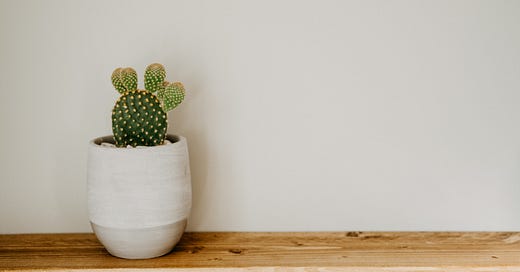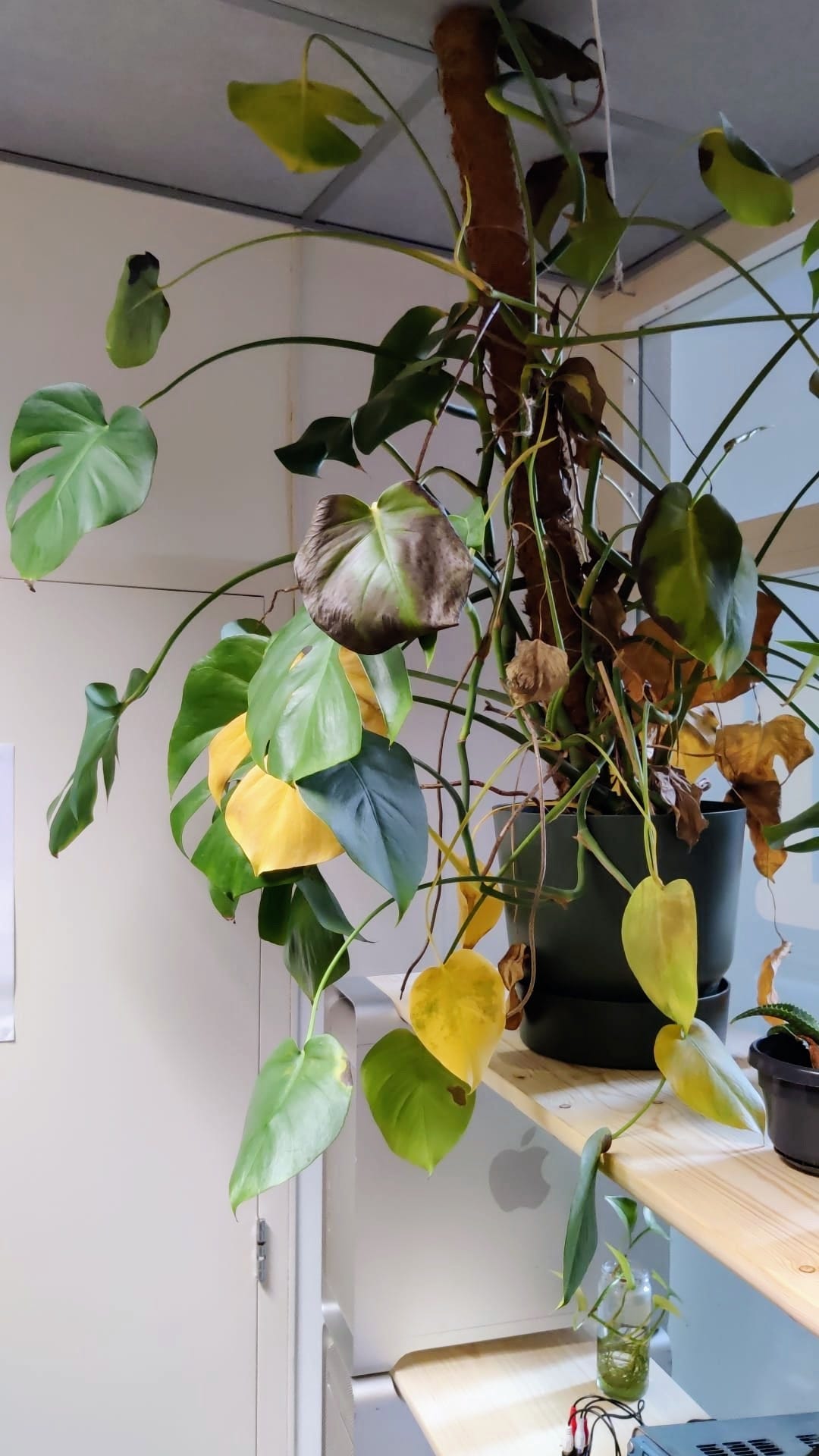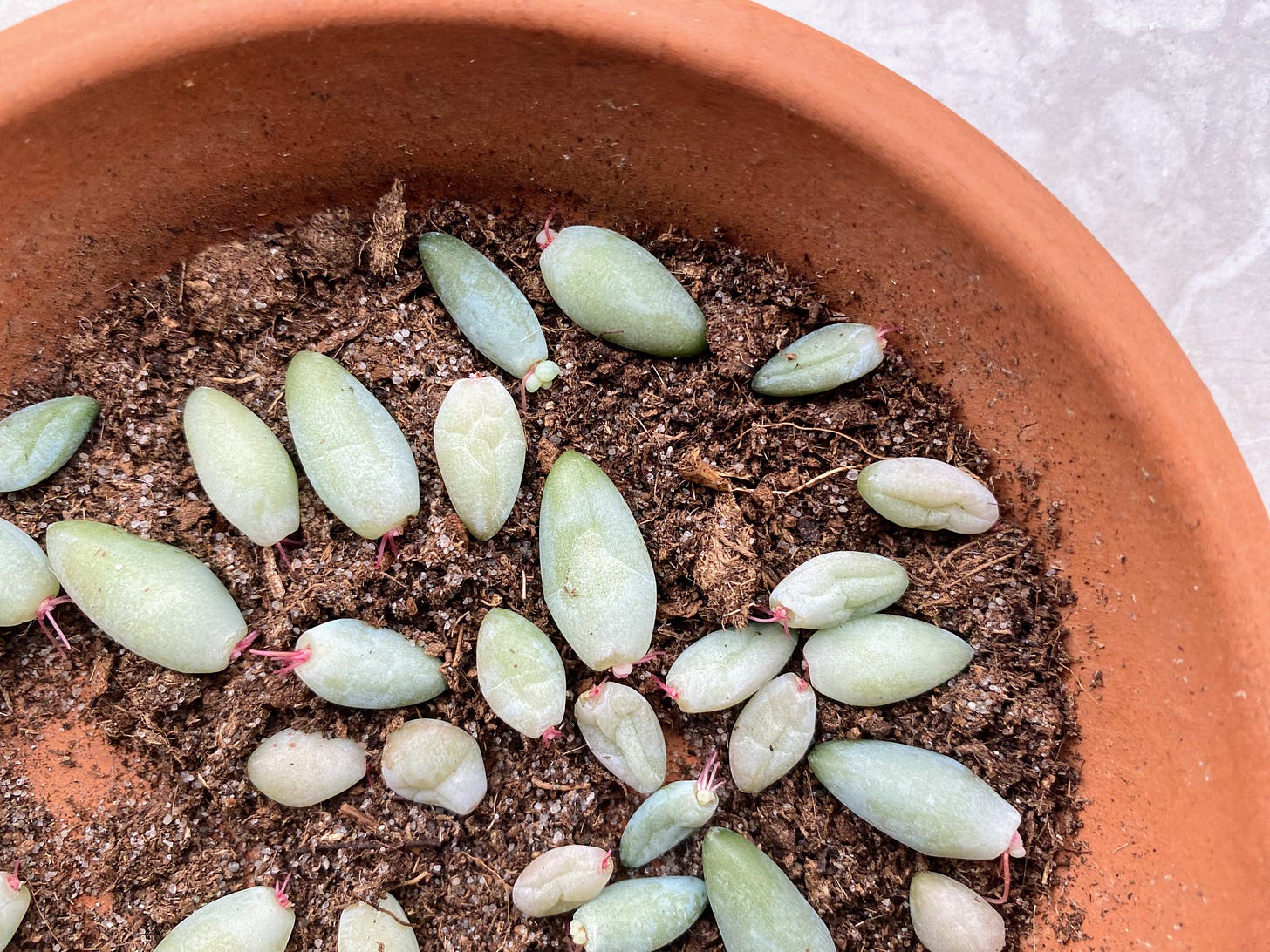The other day a friend sent me a picture of a very sad-looking Monstera deliciosa. They’d watered it before the Christmas break, and when they returned to work two weeks later, the plant looked like this:
Their question was, “what am I supposed to do? Can I still save it?”
By now, I could probably write an entire post about all the plant questions I’ve gotten from friends and acquaintances, so I thought it’d be fun to share my houseplant first aid tips and ask you which plants are currently puzzling/worrying you, or seem to be dying on your watch.
Which plants do you need advice on?
Substack doesn’t enable you to post images in the comments, but if you have an image of a plant, you can always put a link to it in the comments, or describe your plant problem in detail.
Houseplant first aid in action
My first tip is to always, always, always check the moistness of the soil. For most people, giving the plant more water is their first default—this kind of killing with love is probably the number one reason houseplants die.
The soil of my friend’s Monstera was still very moist, so they might have been a bit too enthusiastic watering it before Christmas. Also, over Christmas the building where they work was closed, the heat was turned down low, and the little light this plant gets normally was even less during, literally, the darkest days of the year.
A colder environment + less light = less need for water.
Since the soil was still moist, I asked my friend to check the plant’s roots. This can be a bit of a faff, because it usually means getting soil all over the place as you have to physically remove the plant from its pot.
Excessive watering can lead to the roots rotting, but it doesn’t have to be fatal.
A root that is rotting is squishy or soft, and is brown or black even once you’ve gently removed some soil from it. A healthy root is more springy, definitely not squishy and, underneath all the soil that is probably attached to it, white-ish in colour.
Dealing with root rot
If you discover rotting roots due to overwatering (which means that the soil around the roots is often also still pretty moist, even wet) there is still hope for the plant.
If the majority of the roots are fine, cut away the rotting ones, and see if you can tease out the leaves/branches that these roots lead to, since these will die and might suggest that you’ve underwatered (which you haven’t, they just shrivel because they’re not able to absorb nutrients).
If the majority of the roots are rotted, try to tease apart the roots (and attached leaves and branches) that are still healthy. This will leave you with a much smaller, but hopefully also healthier, plant. Put this smaller plant in a new pot (not a pot that is way too large) with new soil to help it along.
If all the roots are rotted but some of the leaves and branches still look healthy, cut those leaves off and propagate them (most easily, in water).
In some cases, root rot is caused by fungi, although that is much rarer than overwatering in my experience. If you suspect that this might be the case, isolate the plant. You can cut away a healthy part of the plant and put it in a new pot with new soil, but I’d always keep that away from other houseplants for a while to be sure it hasn’t been infected. A safer bet would be to take a leaf cutting and propagate it—again, I’d always put it away from my other plants for a while to be safe.
The Monstera’s roots looked fine, according to my friend, there was no actual water in the bottom of the pot and the pot has drainage holes. Normally I’d recommend that someone puts an overwatered plant in a slightly brighter spot for a week or two, just to help it get rid of that excess water more easily. My friend’s office, however, only has a small window that basically looks out on a wall, so they’re not able to move it.
So my advice was: wait and see, keep an eye on the plant, and not water it for a good while. And, as you know by now, always stick your finger in the soil before watering.
Which of your houseplants are currently struggling? What are your go-to remedies when a plant struggles? And what would you like some advice on? I’d love to know.
Succulent watch
In late November I accidentally broke off a considerable chunk of a succulent in my study (as I describe at the bottom of this post). I collected some of its leaves, and have since been tracking how they’re getting along. Last time I reported on the first small roots appearing, and this week I discovered teeny tiny leaves emerging!
It will still take quite a long time, months, for the leaves to be big enough to go into their own pot, but I always love this stage and marvel at how so little is needed for the plant to create a new plant.
What I’ve been up to
Earlier this month, I wrote about a family heirloom that led to a little social houseplant history.
Over at Female Owned, I’ve been asking about people’s favourite business tools (I’m always here for discussions about favourite notebooks and pens), and wrote about why I left social media to build community around my business.
Thank you for reading A Houseplant Journal, for commenting and sharing it. It means a lot to me, and writing these posts and connecting with you brings me great joy.
I’m making lots of plans for the rest of this year—including keeping a running list of plants that need to be repotted when the days get lighter and longer.
I’ll be back in your inbox later this month x




















